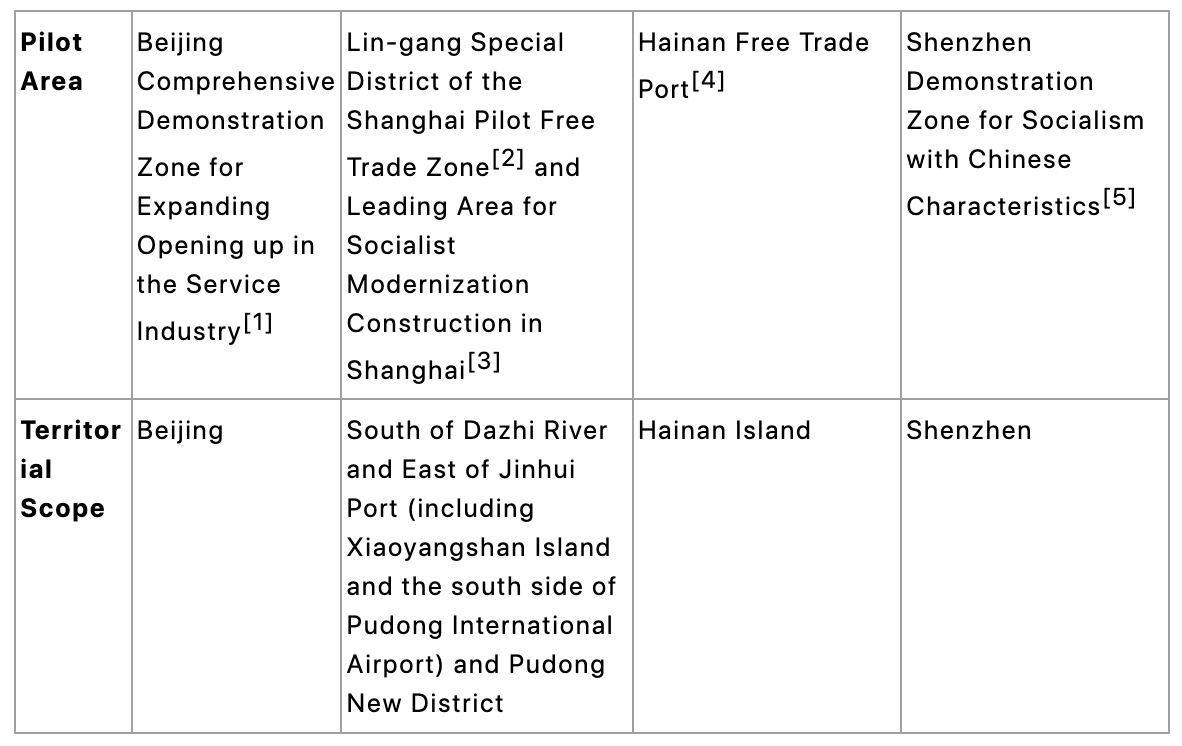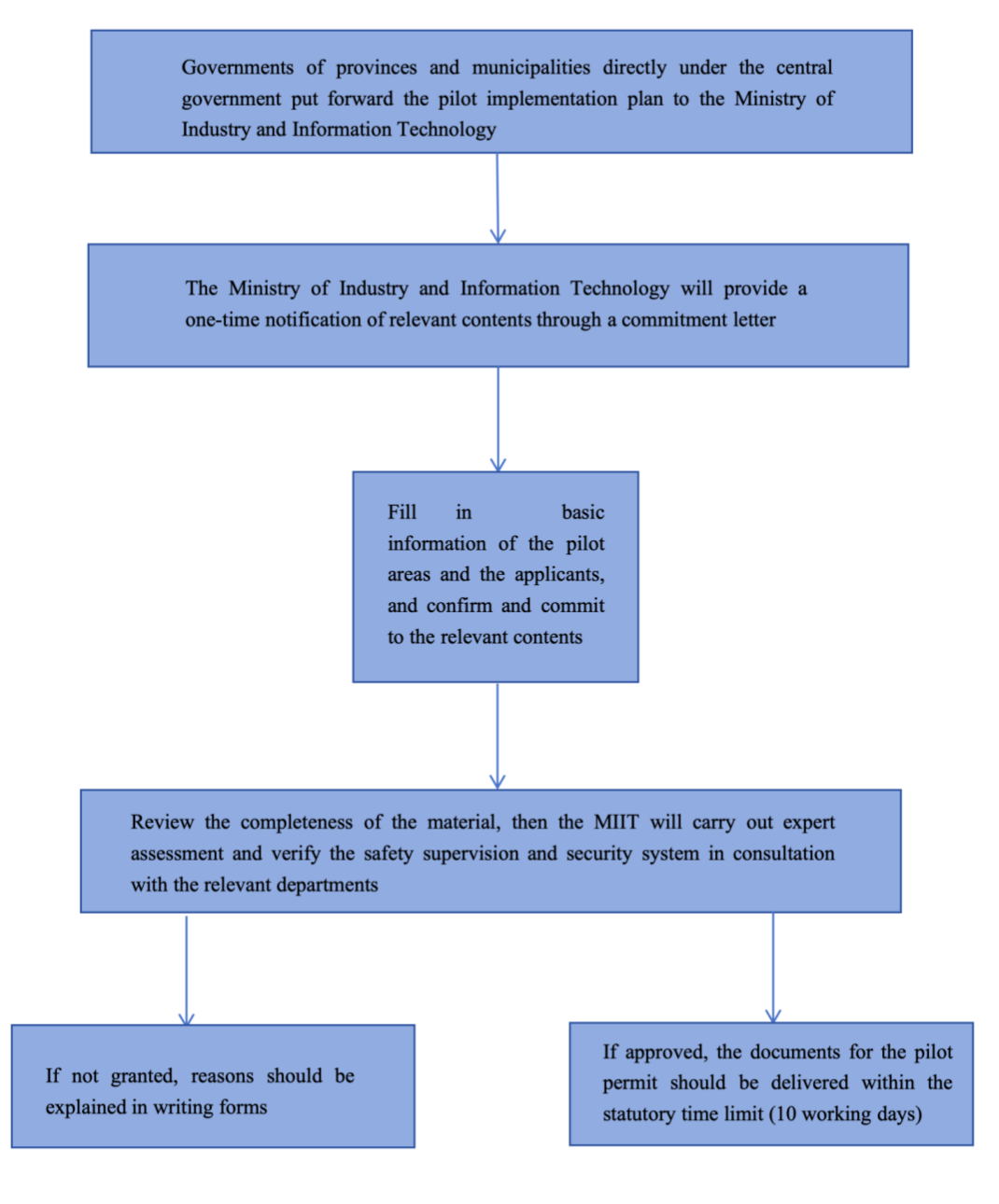(Interns Yifan Zhang and Yao Liu have also contributed to this article)
On April 10, 2024, Ministry of Industry and Information Technology of the People's Republic of China (hereinafter referred to as “MIIT” ) issued the Notice on Launching the Pilot Work of Expanding the Opening-up of Value-added Telecommunications Services (Ministry of Industry and Information Technology Communication Notice [2024] No. 107) , hereinafter referred to as “Notice”) and the Pilot program for expanding the opening up of value-added telecommunications services (hereinafter referred to as “Pilot Program”), deciding to carry out pilot program to expand value-added telecommunications businesses to the foreign invested enterprises. (“Opening-up Treatment”)
This article will interpret the key issues of the Notice and the Pilot Program in a Q&A format, facilitating enterprises to analyze the applicability of the Notice and the Pilot Program according to their specific business characteristics.
1. Where to pilot?
According to the provisions of the Notice, the current pilot areas include the Beijing Comprehensive Demonstration Zone for Expanding Opening up in the Service Industry, Lin-gang Special District of Shanghai Pilot Free Trade Zone and Leading Area for Socialist Modernization Construction in Shanghai, Hainan Free Trade Port, and Shenzhen Demonstration Zone for Socialism with Chinese Characteristics.
Please see the table below for the corresponding administrative regions of each pilot area:

2. Are only enterprises in the pilot areas eligible for the Opening-up Treatment?
Yes.
Currently, only the above four pilot areas are included, which means that enterprises outside the pilot areas are not entitled to the Opening-up Treatment. However, the Notice also stipulates that the scope of the pilot areas will be timely expanded in light of the implementation of the pilot areas, and the relevant matters will be notified separately. We will also pay close attention to and follow up the opening-up work by the Ministry of Industry and Information Technology.
3. Are all enterprises in the pilot areas eligible for the Opening-up Treatment?
No.
It should be noted that the registered address of operator and the placement of service facilities (including renting and purchasing such service facilities) must be within the same pilot area. It is not allowed to purchase or rent CDN and other facilities outside the pilot area to provide acceleration services. The scope of ISP business services is limited to the pilot area, and it must provide internet access services to users through the internet access equipment of basic telecommunications companies; the scope of other business service can be nationwide.
4. In which sectors of value-added telecommunication business, the restriction on foreign equity ratio is cancelled?
According to the Notice, in the areas approved to carry out the pilot, restriction on the foreign equity ratio is cancelled for Internet Data Centers (IDC), Content Delivery Network (CDN), Internet Service Provider (ISP), Online Data Processing and Transaction Processing, as well as Information Services in Information Publishing Platforms and Delivery Services (excluding Internet News Information, Network Publishing, Network Audio-visual, Internet Culture Operations), and Information Protection and Processing Services. The specific meanings and applicable scenarios of these services are shown in the table below:

In view of the complexity and non-exhaustiveness of the applicable scenarios, if the company has any doubt in whether the restriction on the ratio of foreign shares will be abolished in respect of the enterprise's relevant business, it is also welcome to consult and communicate with us at any time.
5. Can the pilot program be launched immediately after the Notice is released?
No.
Pilot areas are required to apply to the Ministry of Industry and Information Technology (MIIT) and obtain approval to carry out the pilot program. The Notice only regulate the filing conditions and assessment procedures in principle but do not give a detailed timetable.
The specific application and disclosure process is shown below:

6. How should foreign-invested telecommunications enterprises apply for Value-added Telecommunications Business Licenses?
The Notice only provides a general provision that foreign-invested telecommunications enterprises intending to carry out the aforementioned value-added telecommunications services in pilot areas should apply to the MIIT for approval in accordance with relevant regulations, without specifying any specific approval process. In accordance with relevant laws and regulations such as the Provisions on the Administration of Foreign-Funded Telecommunications Enterprises, the procedures for applying for a value-added telecommunications business licenses are as follows, but is still necessary to observe whether these procedures are applicable to the pilot approval in the future:

7. What are the impacts on Chinese concept stock companies that intend to list overseas?
In view of the promulgation of the Interim Measures for the Administration of Overseas Securities Offering and Listing by Domestic Enterprises and the Guidelines for the Application of Regulatory Rules, the CSRC has taken a more prudent stance on the legal compliance of VIE-structured enterprises.
For value-added telecommunication services in compliance with the Notice and Pilot Program, the relevant Chinese concept stock enterprises may adopt a red-chip structure with direct shareholding without the need to build a VIE Structure.
In summary, the issuance of the Notice and Pilot Program for Value-Added Telecommunications Services reflects the positive attitude and efforts of the Chinese government in opening up to the outside world in the telecommunications industry, aiming to promote high-quality development of the telecommunications industry and enhance international competitiveness by introducing foreign investment. At present, China's value-added telecommunications industry has formed a diversified market with a continuous increase in the proportion of foreign-invested enterprises. This pilot will help to attract foreign investment more vigorously, consolidate confidence in the development of foreign investment in China, and improve the quality and level of foreign investment cooperation. It also helps eligible Chinese concept stock companies choose a red-chip structure with direct shareholding, without the need to build a VIE structure, to enhance direct control and listing certainty.
[1]http://www.scio.gov.cn/gxzt/zclxcfhzt_25764/2020n_25863/shbjsxylfwykdkfzhsdjsgjfwykdkfzhsfqgzfa/
[2]https://baike.baidu.com/item/国务院关于印发中国(上海)自由贸易试验区临港新片区总体方案的通知/23656155?fromtitle=中国(上海)自由贸易试验区临港新片区总体方案&fromid=23654822
[3]https://www.gov.cn/gongbao/content/2021/content_5627682.htm
[4]https://www.hainan.gov.cn/hainan/c100669p/202306/673ebb5812e542ff8c0f71c436fd14b0.shtml
[5]https://www.gov.cn/zhengce/2019-08/18/content_5422183.htm










